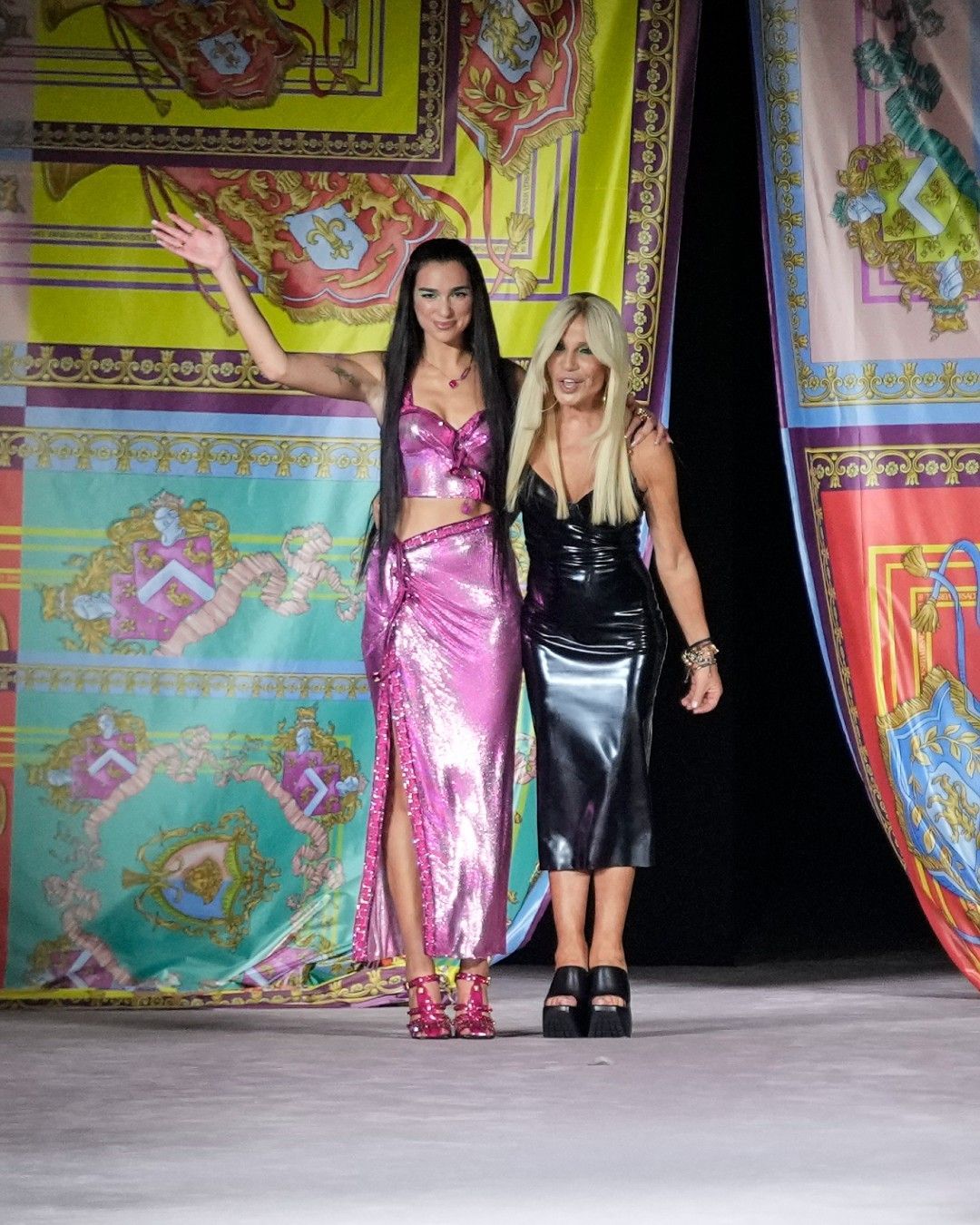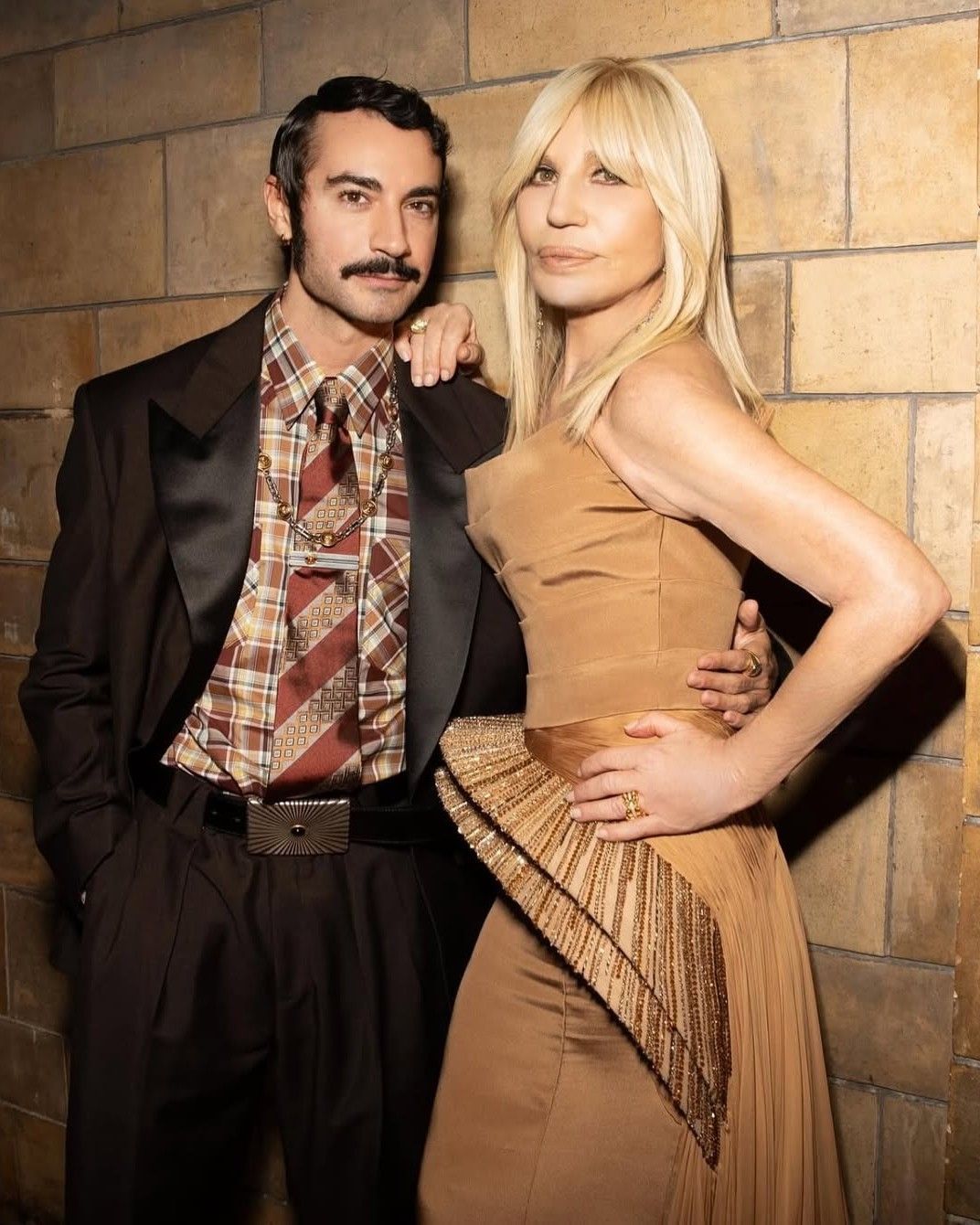
Why are so many popstars signing collections with brands? How brands are trying to elevate the idea of a luxury merch
Next May 23, Versace will present a special collection co-designed with Dua Lipa in Cannes. Perhaps twenty-four hours before Versace's announcement, it was Marni that announced a collection co-created with Erykah Badu. Going back a month, Balmain created an entire couture collection with Beyoncé and Tommy Hilfiger one with Shawn Mendes while, upstream of it all, there seems to be the marriage of Pharell Williams and Louis Vuitton, a seismic event that has sanctioned once and for all the legitimacy of a collaborative format with a long history but often greeted with skepticism by the fashion intelligentsia.
In the past, the union of music artists and luxury brands has worked in alternate manners: Gucci's collection created together with Harry Styles was, in retrospect, Alessandro Michele's swan song, the extreme for better or worse of everything that had defined his tenure; unfortunate, on the other hand, was Dior and Travis Scott's, which also brought the brand financial losses; more successful, on the other hand, were Giuseppe Zanotti's pioneering link-ups with Jennifer Lopez, Rita Ora, Kid Cudi, and Kanye West over a decade ago. Other possible examples include the collaboration of Prada and Homer, Frank Ocean's brand, in 2021; those of Fendi and Jackson Wang and Chanel and Pharrell in 2019; and that of Burberry and Jason Wu in 2016 but also the short-lived and unhappy union of Rihanna and LVMH for Fenty. As we can see, the idea of a collaboration between a singer and a luxury brand is by no means new - no less, the systematic increase in their frequency indicates that something has been changing in the way we perceive and consume luxury as a culture.
That the luxury world has become increasingly reliant on celebrities in recent years is no mystery. With the new digital ecosystems, the simple partnership between a pop star and a luxury brand can move out of the limited confines of a red carpet and through Instagram and TikTok channels, public appearances, and paparazzi photos cleverly distributed by the brands themselves to the entire press in the space of a click. But it is one thing to wear a brand in the guise of an ambassador; it is another thing to affix one's name to the collection. The idea would be to create additional value for entry-level customers but also to appeal to the wealthier strata of a certain fandom: rich and poor may have different lifestyles, but they all listen to the same music. Let's say it bluntly: almost no one has any illusions that these collections are really designed by the various pop stars - both because the pop stars in question have no design experience whatsoever and because the design work of any luxury product is so broken up into different segments, stages, and teams that often not even the creative directors design the clothes that then land on the runway.
This kind of direct collaboration existed, until recently, only in the streetwear world since luxury brands took themselves too seriously to deliver the metaphorical needle and thread into the hands of a "lightweight" figure like a pop star. An attitude that reflected the existence of a clientele still tied to culturally elitist notions of luxury - notions that still exist today, but alongside an increasingly broad and popular spread of fashion culture. Even today, for older generations, these collaborations essentially represent glorified merch only that, while in the past brands feared that the idea of a luxury merch would erode exclusivity and positioning, today there is not the same fear in announcing such blatantly commercial projects, and even the audience itself is radically different in the ways in which it can interact with and consume, in direct or indirect ways, the culture that a certain brand represents.
lead designer justice
— Throwing Fits (@ThrowingFits) May 3, 2023
full pod with @brendahashtag out now pic.twitter.com/ayZvR8wlRA
This is due to the fact that global pop stars, those with numerous millions of followers on Instagram, are no longer simply musical artists whose video clips are seen every now and then as in the past but cross-cutting phenomena capable of catalyzing titanic levels of attention through countless channels. If once one could ignore the existence of a certain singer simply by not listening to his or her music, today one is almost informed against one's will of the success of artists such as BTS, Blackpink, Bad Bunny, Doja Cat, and so on. But whereas before the pop star and his or her image were the product that was sold, today popstars are a brand in their own right that manifests themselves in the world through different products: nail polish, perfume, or, indeed, a luxury dress - no longer just a CD or a T-shirt bought at a concert.
In an industry in which commercial and continuous growth demands impose a certain leveling of taste, zeroing in on the individual specificities of brands in commercial catalogs designed to be easily digestible by the widest possible number of consumers having a world-class pop star in one's stable means standing out in a unique way, engaging a relationship with his or her entire fandom and, more generally, planting one's flag in a pop culture domain that will go on to build a certain brand's present and future heritage. It remains to be seen whether, in the long run, the almost mathematical success that these collaborations achieve does not end up completely swamping the appreciation of those more subtle qualities of clothing that make fashion an artistic language as well as commerce.













































